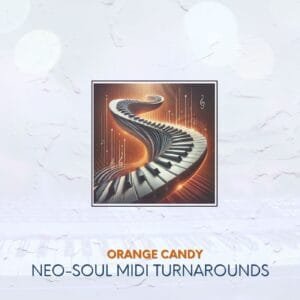Trap music, a subgenre of hip-hop, has become a dominant force in modern music, influencing everything from mainstream pop to global dance floors. Its distinctive sound, characterized by heavy bass, sharp hi-hats, and dark, gritty lyrics, has captivated listeners worldwide. This article explores the evolution of trap music, tracing its journey from Southern rap roots to its current global influence.
Origins of Trap Music
Trap music originated in the Southern United States, particularly in Atlanta, during the late 1990s and early 2000s. The term “trap” refers to places where drug deals happen, and the music often reflects the harsh realities of street life. T.I., Gucci Mane, and Young Jeezy are early pioneers of trap music, with T.I. often credited for popularizing the term through his 2003 album “Trap Muzik.”
These artists laid the foundation for the genre with their raw, unfiltered lyrics about the struggles of street life and survival. Musically, early trap characterized itself through the heavy use of 808 bass drums, rapid hi-hat patterns, and atmospheric synths, creating a dark and immersive sound.
Rise to Mainstream Popularity
Trap music began to gain national attention in the mid-2000s. The proliferation of mixtapes and the internet played a crucial role in spreading trap music beyond the South. Key albums like T.I.’s “Trap Muzik” and Young Jeezy’s “Let’s Get It: Thug Motivation 101” helped to bring Trap to a broader audience.
Major record labels started to take notice, and radio play helped propel trap music into the mainstream. The genre’s raw and authentic depiction of life resonated with many, and its infectious beats made it a staple in clubs and parties across the country.
Evolution of Sound and Production Techniques
As technology advanced, so did the sound of trap music. Producers like Lex Luger, Metro Boomin, and Zaytoven began to refine and expand the genre’s sonic palette. Lex Luger’s work on tracks like Waka Flocka Flame’s “Hard in da Paint” introduced a more polished and aggressive sound, characterized by bombastic 808s and intricate hi-hat rolls.
Metro Boomin and Zaytoven further pushed the boundaries, incorporating lush synths, melodic elements, and complex arrangements. The evolution of production techniques allowed for greater experimentation, leading to a more dynamic and versatile sound. Lyrically, trap music also evolved, with artists exploring a wider range of themes, from wealth and success to personal struggles and mental health.
Trap Music in the 2010s
The 2010s saw trap music solidify its position in mainstream pop and hip-hop. Artists like Future, Migos, and Travis Scott became household names, bringing trap music to new heights. Future’s use of auto-tune and melodic flows on tracks like “March Madness” introduced a more emotive and introspective style of trap.
Migos’ breakout single “Versace” and their signature triplet flow became influential, shaping the sound of modern hip-hop. Travis Scott’s “Astroworld” showcased a blend of psychedelic and trap elements, creating a unique and immersive experience. The genre also began to blend with other styles, resulting in cross-genre collaborations that brought trap influences into EDM, pop, and Latin music.
Global Influence and Adaptations
Trap music’s influence quickly spread beyond the United States, inspiring artists around the world to adopt and adapt its sound. In Latin America, artists like Bad Bunny and Anuel AA fused traditional reggaeton with trap, creating the subgenre known as Latin trap. Tracks like Bad Bunny’s “Soy Peor” brought trap elements to a new audience, while maintaining the genre’s raw and gritty aesthetic.
In the UK, artists like Skepta and Stormzy incorporated trap into the UK grime scene, creating a hybrid sound that resonated with British audiences. The international appeal of trap music also extended to fashion and pop culture, influencing trends and styles globally.
Trap Music Today
Today, trap music continues to evolve and thrive. Streaming platforms and social media have democratized music distribution, allowing new artists to emerge and gain recognition. Artists like Lil Baby, Roddy Ricch, and DaBaby are pushing the genre forward, each bringing their unique take on the trap sound.
Current trends in trap music production include the use of more melodic elements, sophisticated beat structures, and innovative sound design. The genre’s influence is evident in its continued presence at the top of the charts and its integration into a wide range of musical styles.
Future of Trap Music
The future of trap music looks promising, with numerous possibilities for innovation and growth. As technology continues to advance, new production tools and techniques will likely emerge, enabling even more creative expression. The global nature of music means that trap will continue to blend with various genres and cultural influences, leading to fresh and exciting sounds.
However, challenges remain, such as the need for artists to navigate an increasingly competitive and saturated market. Despite these challenges, the opportunities for trap music artists are vast, from collaborations with artists in other genres to leveraging new platforms for distribution and promotion.
Conclusion
The evolution of trap music is a testament to the genre’s resilience and adaptability. From its gritty origins in the Southern United States to its current status as a global phenomenon, trap music has continually reinvented itself while staying true to its core elements. As it continues to evolve, trap music will undoubtedly remain a powerful and influential force in the world of music.
















